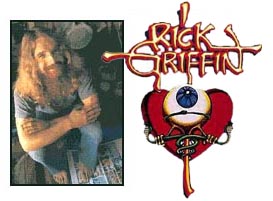 Rick Griffin (USA)
Rick Griffin (USA)
Rick was born Richard Alden Griffin in June 1944 near Palos Verdes, California USA and, as a young teen, became involved in the two areas which would influence much of his life: Surfing and cartooning. A school buddy taught him to surf and Mad magazine's Don Martin inspired his first drawings. Apparently, Rick was interested in hot rod cars and motorcycles from a young age as well.
He started drawing surf cartoons professionally at age 13, doing spot drawings, comic books, and posters for Greg Noll Surfboards, a surfboard manufacturer in Hermosa Beach, and trading this work for surfboards. John Severson, publisher of Surfer magazine, saw his work and then met Rick later when he came to visit Rick's high school to show a surf film. Surfer magazine hired Rick as a freelancer, and his very first comic strip for them was called The Gremmies. After graduating Rick was hired as the magazine's staff artist. During his time at Surfer, Rick created his famous trademark cartoon character "Murphy." (Although Rick left his staff position at Surfer in 1964, he retained the rights to "Murphy" and continued to produce additional strips and illustrations of the character well into the late '80s.)
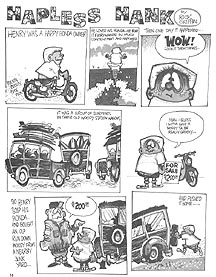 |
While briefly attending Los Angeles Chouinard Art Institute (now Cal Arts) in the '60s, Rick met his future wife, artist Ida Pfefferle. (Eventually Rick became the father of four children: Flaven, Adelia, Miles, and Katie.)
Also during these college days in LA, Rick was injured in a car accident, dislocating his left eye. (Some say this may have been the inspiration for the "disembodied eye" motif which became a well-known element in some of his subsequent work. Click here for another opinion on the eye.) The left side of his face was also badly scarred, so he grew a beard after this.
It has been said that Rick was told in art school, "You cannot make art with a Rapidograph!" However, Rick's cartoon drawing style did indeed develop using that technical tool. In addition to his comics for Surfer, he produced artwork for Ed "Big Daddy" Roth (creator of the "Rat Fink" hot rod character) and CAR-Toons magazine (example here at right from CAR-Toons Issue No.20, Dec. '64).
After moving to San Francisco in 1965, with help and introductions from his long-time friend Randy Nauert, he quickly made a name for himself as an illustrator of dance posters, rock concert posters, logos and album covers for many famous secular bands. His maturing technique revealed a keen interest in nineteenth century graphics and Native American art, with a distinctive lettering style which would later inspire the forms of Hispanic graffiti. These diverse influences and elements (including the rich use of bright color and his trademark visuals such as surf scenes, beetles, skulls, and eyeballs) made Rick one of the "Big Five Psychedelic Artists" in the Haight-Ashbury scene, arguably the most influential and easily recognized. His work was in high demand and became widely imitated. He also drew a number of underground comics including Zap and Tales From The Tube.
In 1969, Rick moved his family back to Southern California.
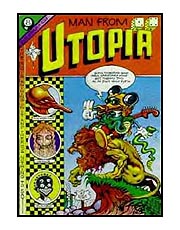 Rick was going through some heavy spiritual battles internally, and his art during this period reflects these struggles. His work included odd-looking references to Jesus Christ which revealed both his interest in, and his limited understanding of, just who Jesus is. "Rick included them because he knew they had power," explained his friend and agent Gordon McClelland, "But he wasn't aware of exactly what he was dealing with." (Later, in a 1974 interview, Griffin himself said, "Before I knew Christ I was really into symbols, because I tried to use symbols to explain to myself what it was I was trying to find out. I don't think I would use any Christian symbols now.")
Rick was going through some heavy spiritual battles internally, and his art during this period reflects these struggles. His work included odd-looking references to Jesus Christ which revealed both his interest in, and his limited understanding of, just who Jesus is. "Rick included them because he knew they had power," explained his friend and agent Gordon McClelland, "But he wasn't aware of exactly what he was dealing with." (Later, in a 1974 interview, Griffin himself said, "Before I knew Christ I was really into symbols, because I tried to use symbols to explain to myself what it was I was trying to find out. I don't think I would use any Christian symbols now.")
One of these unusual pieces was his Man from Utopia comix (cover shown at right), a sort of comic-portfolio of wild artistic ideas and concepts, which included Jesus images on the cover and throughout. In 1970, shortly after dropping Utopia off to be printed, Rick traveled to the Mendocino area to visit some old friends. They had become Christians, and during that visit Rick gave his life to Jesus Christ.
Although he struggled to figure out where he, as an artist, fit into the Body of Christ, Rick naturally took his work in a whole new direction after this heart-changing decision. Rick's "Murphy" strip in Surfer magazine Vol. 12, No.3, Aug. '71 (shown here at left) had his famous character encouraging other surfers to kneel with their faces in the sand as he prayed this amazing prayer (Remember, this was in a secular magazine!):
"Oh, Heavenly Father, Lord God All Mighty... We praise you for your excellent splendor & we humbly thank you for this wonderful gift of life you have created. We thank you for salvation in your Son... Jesus Christ, who gave His Life for our sin & who forgives us for falling short of Your Glory & makes us clean & worthy to stand in the Presence of Your All-Consuming Brilliance for all eternity! Lord, we thank You that we have victory over death through faith in Jesus who arose from the grave and ascended into Everlasting Life! A Heavy price to pay for our ransom, but I guess that's how much we're worth to You... Father, You've said in the Holy Bible that whatever we asked in Christ's Name would be given ... So right now we pray for some big, hot, glassy tubes... We'll give You all the Glory, Lord, for we ask it in Jesus' Precious Name! Amen."
As one can see, the following full page showed a majestic, Revelation-inspired image of the Lord Jesus which is perhaps more awesome than many illustrations of Christ seen before or since in Christian comics.
In 1971 Rick also created two Christian comic tracts featuring a character named "Holy Ned." They were printed on 8-1/2" x 11" paper and handed out for free to anyone who would receive them. He illustrated cover art for the local San Clemente Baptist Church telephone book and some small art jobs for businesses in the area. Rick also collaborated with cartoonist Craig Yoe, producing a cover for Yoe's Jesus Loves You comic (shown at right) published by Zondervan.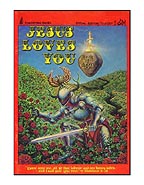
Rick's turning to God, and becoming a "Jesus Freak," was not received well by a number of his underground comics peers. One has admitted in print that a group of them went to Rick's home with a bottle of tequila and plans to get him drunk, kidnap him and "bring him back into the fold." However those plans fizzled when the would-be kidnappers ended up drunk themselves on Rick's bathroom floor. However, Rick's agent Gordon McClelland adds, "While it's true some of the underground artist were negative toward Rick becoming a Christian, it was by no means all of them. For instance, Rick and I visited Robert Crumb on a number of occasions, and he seemed genuinely happy for Rick. On one occasion he asked Rick to contribute to an upcoming Zap. Rick told Crumb if he did do art for Zap, it would have a Christian message. Crumb responded by saying that Rick had 4 pages and he could put anything on them he wished to. I really feel Crumb had great respect for Rick, and I know Griffin counted Crumb as a good friend." This 4-pager may be the one that appears in Zap Comix #7 (March '74) called "For God so Loved the World."
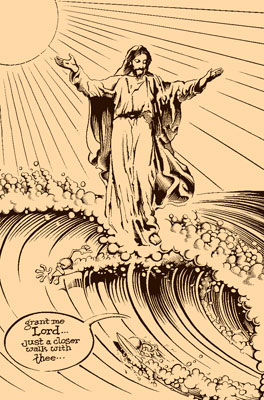 |
In a 1974 interview Rick said, "It's weird about Jesus freaks. I wonder why they call them Jesus freaks? Well, actually the word 'Christian' was derogatory at one time too. They called them Christians in derision. The word Christian means the same thing as Jesus freak; someone who's tripped out on Christ, someone who identifies with Christ so much, that that becomes the purpose of their life, to bear witness to Christ. That's what I like to do. I like to talk about Jesus."
In 1976 Rick and his agent McClelland traveled to Europe to exhibit Rick's work in England and Holland and to surf in France and Spain. After their return to the US, McClelland wrote Rick's biography which was printed in 1980 by Perigee Paper Tiger in New York, NY. (This book has been reprinted and is available online.)
At this same time Rick was in the process of producing some exquisite illustrations for The Gospel of John which was published in 1980 by The Word for Today, with paraphrased Scripture text by Chuck Smith of Calvary Chapel in Costa Mesa. The art in this booklet has been called Rick's "most stunning achievement." (A new hardcover version of The Gospel of John
which was published in 1980 by The Word for Today, with paraphrased Scripture text by Chuck Smith of Calvary Chapel in Costa Mesa. The art in this booklet has been called Rick's "most stunning achievement." (A new hardcover version of The Gospel of John was released by Word For Today in 2008 with some previously unpublished artwork by Rick.) Through Calvary Chapel's affiliation with Maranatha! Music, Rick was hired as Maranatha's art director to produce album covers, posters and flyers for the growing Christian music scene.
was released by Word For Today in 2008 with some previously unpublished artwork by Rick.) Through Calvary Chapel's affiliation with Maranatha! Music, Rick was hired as Maranatha's art director to produce album covers, posters and flyers for the growing Christian music scene. 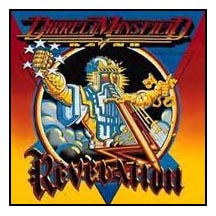 Rick illustrated album covers for a number of Christian artists and groups including Mustard Seed Faith, Oden Fong, Darrell Mansfield Band (shown here at right), and Kerry Livgren from the late '70s to the early-to-mid '80s.
Rick illustrated album covers for a number of Christian artists and groups including Mustard Seed Faith, Oden Fong, Darrell Mansfield Band (shown here at right), and Kerry Livgren from the late '70s to the early-to-mid '80s.
From that point on in his career, the majority of Rick's work appears to have been done for secular projects and companies, primarily.
Rick's last published work is said to be a self-portrait of himself at "Heaven's Gate," pen and ink in hand, which was printed in a San Francisco magazine. Soon after that, in August 1991, Rick was killed when his Harley motorcycle was forced off the road by a van he was attempting to pass.
Although Rick was a very successful cartoonist and illustrator, he has been one of the lesser known of the '70s American Christian cartoonists since his death. 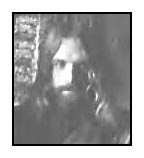 This is probably due to the fact that he produced only a limited amount of comic book or strip work which has been noted or recorded as specifically Christian. On the other hand, his reputation has continued to grow in the secular field, and his work is considered very collectable among fans of surfing and rock music artwork. Many of his various reproductions sell for rather high prices on Ebay. A popular surfing area north of San Francisco has even been renamed "Griffins" in his honor.
This is probably due to the fact that he produced only a limited amount of comic book or strip work which has been noted or recorded as specifically Christian. On the other hand, his reputation has continued to grow in the secular field, and his work is considered very collectable among fans of surfing and rock music artwork. Many of his various reproductions sell for rather high prices on Ebay. A popular surfing area north of San Francisco has even been renamed "Griffins" in his honor.
We pray that Rick's powerful prayer in the "Murphy" strip above, as well as the witness of his Christian work displayed here, have ministered and will continue to minister to many who read these words.
| Order the latest edition of The Gospel of John book illustrated by Rick Griffin.
This is a hardcover "coffee table" version of The Gospel of John from Word For Today Publishing and includes some artwork drawn for the project that was not previously used. from Word For Today Publishing and includes some artwork drawn for the project that was not previously used.
The original 1970s collaboration by Calvary Chapel Pastor Chuck Smith and Rick Griffin is considered to be a classic by many.
Click here to order The Gospel of John . .
|
|
|
More Rick Griffin on the Web
Rick Griffin
(Has galleries but these contain Rick's secular artwork primarily)
http://www.myraltis.co.uk/rickgriffin/bio.htm
http://www.myraltis.co.uk/rickgriffin/galleries5.htm
For information on purchasing Rick's original artwork,
please contact his widow Ida Griffin at